 Chapter 1 - Environmental responsibilities
Chapter 1 - Environmental responsibilities
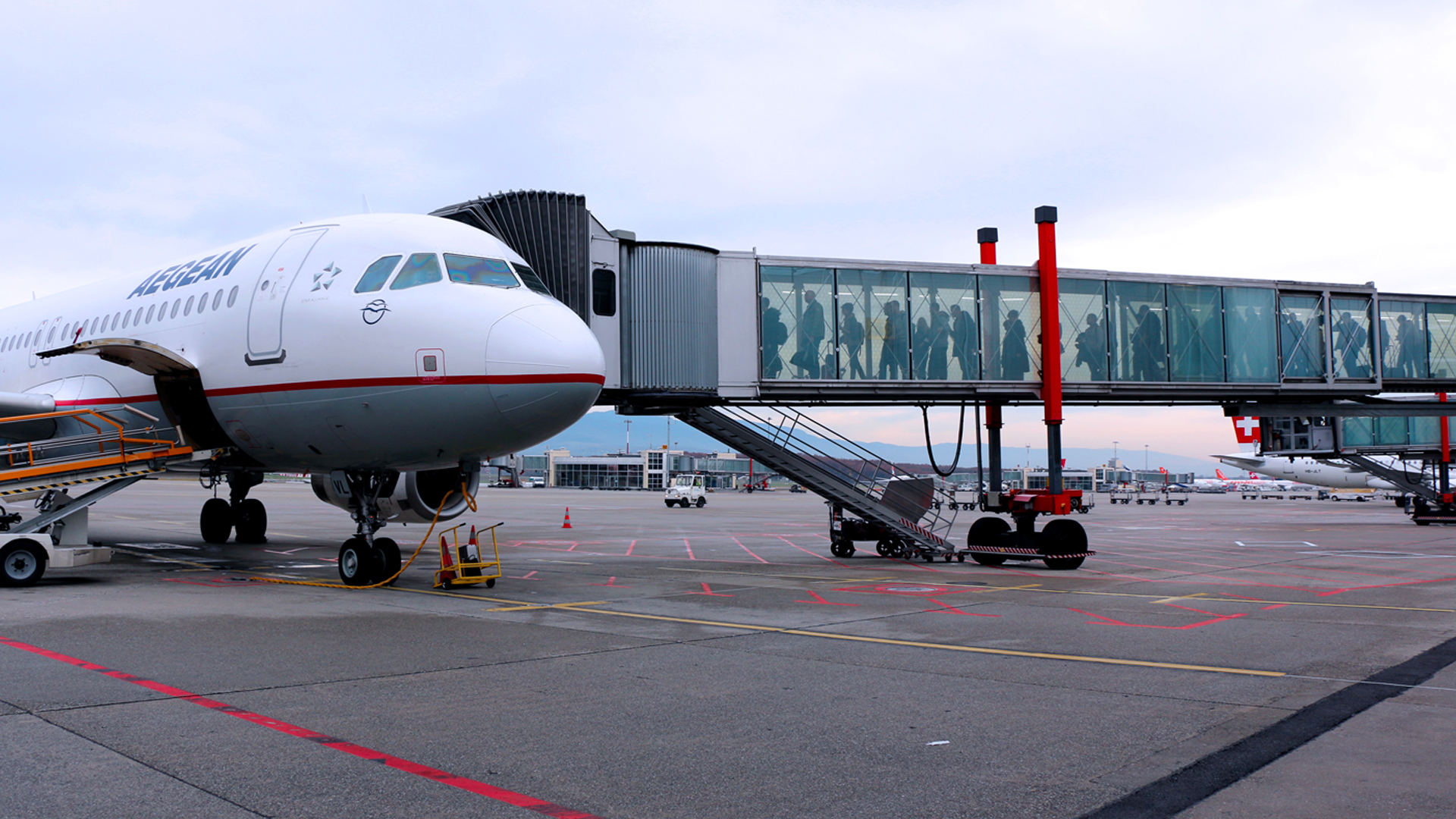.jpg)
Chapter 1 - Environmental responsibilities

Committed to minimising CO2 and pollutant emissions resulting from airport activities, Genève Aéroport has set itself the goal of ending the use of fossil fuels in all its buildings and infrastructure by 2025. It has also planned to further develop solar production and electric mobility on the apron. Moreover, the airport is developing projects aimed at encouraging passengers and employees to prefer sustainable means of travel.
Intensity of greenhouse gas emissions (scope 1,2 and 3) info
2017
12.6 kg/traffic unit
2018
12 kg/traffic unit
2019
11.9 kg/traffic unit
Target 2020
12 kg/traffic unit
Genève Aéroport committed itself, on the occasion of the June 2019 General Assembly of the Airports Council International (ACI), to reaching the target of net zero carbon emissions (excluding air traffic) without any compensation by 2050, whilst exploring ways to bring this deadline closer. Areas of focus for the airport are the abatement of fossil fuels by 2025 for the heating and cooling of buildings, mobility on the apron, energy efficiency and CO2 emissions from infrastructure.
Genève Aéroport retains its place among the club of exemplary airports in terms of CO2 emissions management. Its Level 3+ Airport Carbon Accreditation was renewed in 2019. This certification recognises and verifies Genève Aéroport’s efforts to manage and offset its greenhouse gas emissions. The 8,900 tonnes of CO2 emitted by the airport in 2018 were offset by the purchase of Gold Standard certified carbon certificates.
« Currently, more than 288 airports worldwide are certified and only 61 are Level 3+ certified (i.e., carbon neutral, maximum level of certification). »
Additionally, in this context, easyJet, the main airline operating at the airport, announced in November 2019 its decision to offset, in future, carbon emissions for all of its flights. Indeed, easyJet is aiming to be the first airline in the world to achieve carbon neutrality.
The airport’s nitrogen dioxide (NO2) emissions increased by 0,6% between 2018 and 2019. These emissions should decrease in the coming years thanks to the increase in electric vehicles in use on the apron, air fleet renewal and the scheduled closure of the airport thermal power plant by 2025.
Carbon-neutral airport infrastructure
Greenhouse gas emissions by source
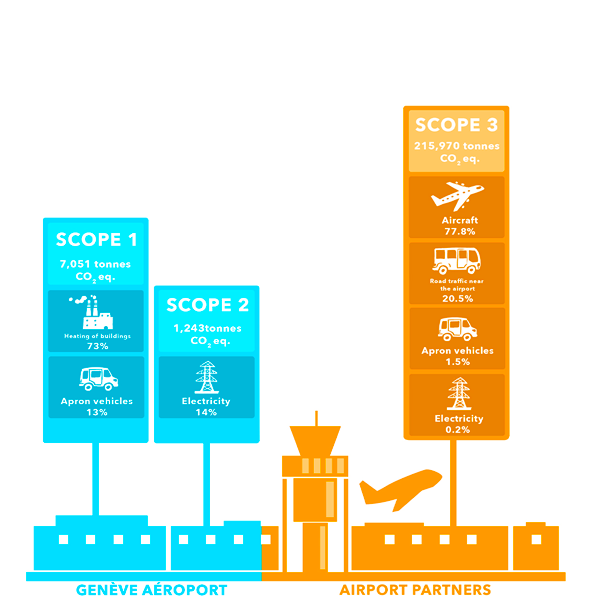
Air traffic emissions monitoring
The Advisory Board for Air Traffic Nuisance Control (CCLNTA) has appointed a subcommittee responsible for monitoring the airport’s CO2 emissions. Its members, being the representatives of the Canton and environmental associations, make sure that the objectives set out by the Cantonal Climate Plan are pursued. In the last two years, it has met six times and discussed actions implemented by Genève Aéroport aimed at reducing its own emissions and examined measures concerning air traffic emissions. According to a calculation made by the Federal Office of Civil Aviation (FOCA), the total of CO2 emissions from air traffic departing from Genève Aéroport was 1.3 million tonnes in 2018.
Air quality monitoring
Genève Aéroport, in December 2018, equipped its air quality monitoring station with a new device which allows for the measure very fine particulate matter (PM2.5). In 2019, the annual average value of this was just below the limit value. Installed at the edge of the runway, in the northern sector, this instrument allows for the monitoring of emissions in the airport area. Data is transmitted and integrated with the analyses carried out by cantonal authorities. Data measured by the airport station is available on the Transalp’Air website. In 2019, as in 2018, the average annual value for fine particulate matter (PM10) and nitrogen dioxide (NO2) measured at the airport station was found to be in compliance with the limit value.

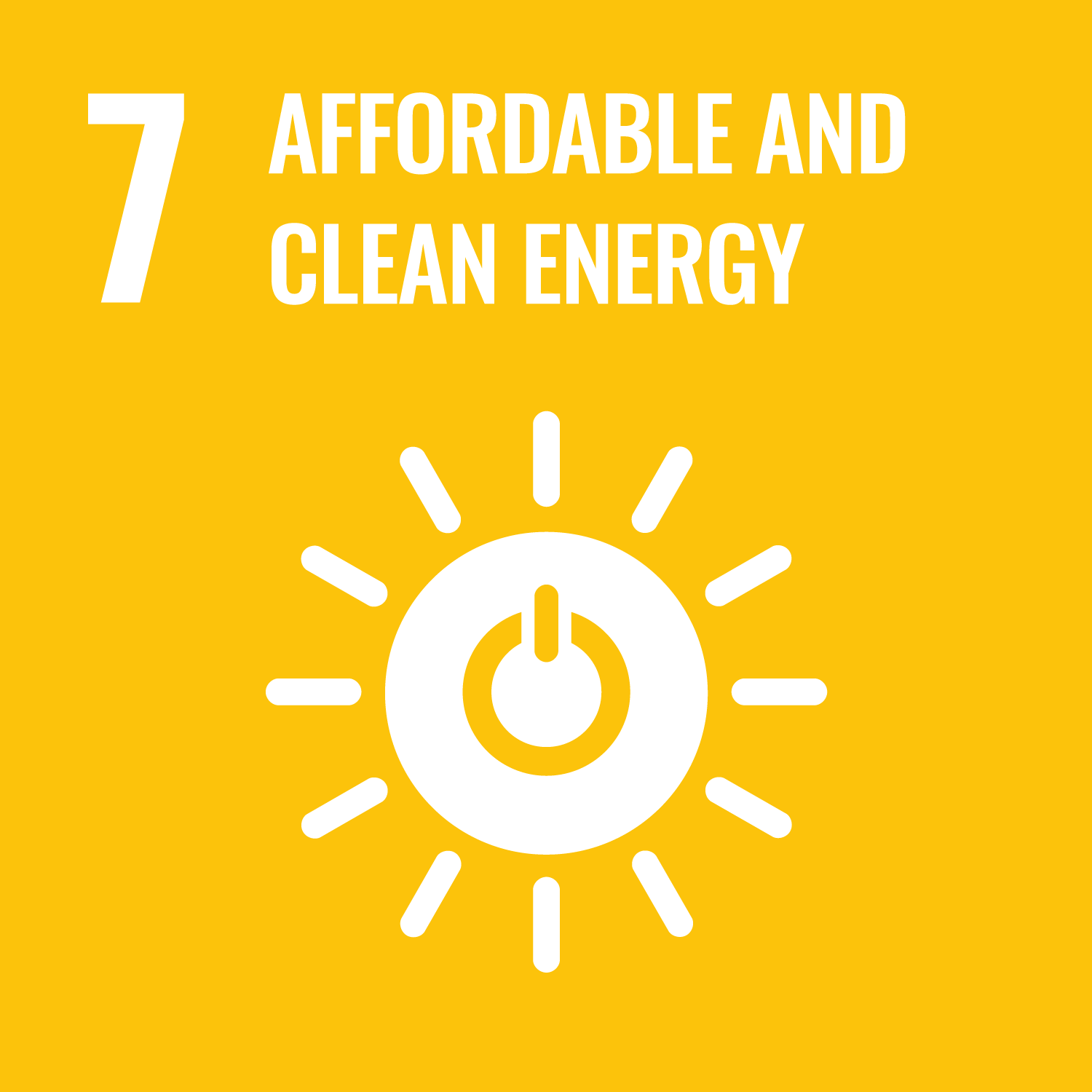
Gain in energy efficiency
In 2019, total energy consumption was 104 GWh. The share of electric energy is equivalent to the consumption of approximately 20,000 Geneva households over the year. In recent years, the actions implemented have allowed Genève Aéroport to reduce its total consumption, thereby improving its energy efficiency since 2006 (+26.4% in 2019). By 2020, Genève Aéroport aims to achieve energy efficiency of 25%.
Among the projects which have contributed to this improvement are the lighting changes in freight building in 2019 as well as those in the check-in hall. The use of presence and light intensity sensors has allowed for the precise regulation of lighting power in each area. These two projects saved 837 MWh/year.
More energy-efficient runway lighting
The runway lighting is currently being renewed. This is a major project, as 982 halogen lights, all particularly high-energy-consuming and obsolete, are slated for replacement with LEDs by the summer of 2020. Featuring a longer lifespan (more than 10 years versus 18 months for halogen bulbs), the LEDs have the advantage of using two-thirds less energy.
The energy efficiency criterion is now essential at Genève Aéroport and the choice of certain equipment depends on it. The Baggage Logistics Centre will be equipped with latest-generation scanners (standard 3 EDS) for the screening of checked baggage. The machines selected are renowned for their low heat release.
Improving energy efficiency since 2006
2017
+23.9%
2018
+24.6%
2019
+26.4%
Target 2020
+25%


Energy and climate exemplarity of the Swiss Confederation
Since 2016, Genève Aéroport has been part of the Confederation's Exemplary in Energy Programme, its related first set of measures having been defined until the end of 2020. In September 2019, the airport renewed its engagement towards the Confederation. Our objectives, in terms of energy and climate exemplarity, are now defined until 2030.
Increase of the renewable energy share
Taking into account all sources of energy (heating, cooling, electricity, vehicle fuels), Genève Aéroport's share of renewable energy in 2019 corresponds to 57%. Therefore, the 2020 target is met. The airport is committed to providing 100% renewable energy for all its infrastructure by 2025.
To this end, ambitious projects are under way. As regards the runway, seventeen autonomous heat pumps were installed in June 2019, allowing for both the cooling and heating of aircraft prior to take-off. Easily manipulated by ground personnel, these replaced an obsolete, high-energy-consuming system. These facilities consume less energy.
In this context, in November 2019, Genève Aéroport signed-off its connection to the Services industriels de Genève’s (SIG) GeniLac ecological thermal network. The airport will invest around CHF 80 million in thermal networks and power plants in order to accommodate GeniLac. As a result, it will abandon its current heating plant, which consumes two million litres of fuel oil a year and dates back to the 1970s.
« From 2023, it will progressively be able to heat and cool its buildings using a sustainable and renewable resource: lake water. The airport will thereby reduce its CO2 emissions by 5,300 tonnes a year. »
The airport, in order to reduce its CO2 emissions, will also rely on geothermal energy. One hundred and ten geothermal probes are buried about 300 metres beneath the East Wing. Connected to heat pumps, they will provide, from November 2020, heating in winter and cooling in summer to this new building dedicated to long-haul flights. About 100 identical probes were also deployed during the construction of the new Baggage Logistics Centre.
Share of renewable energy at Genève Aéroport info
2017
54%
2018
57%
2019
57%
2020 Target
56%
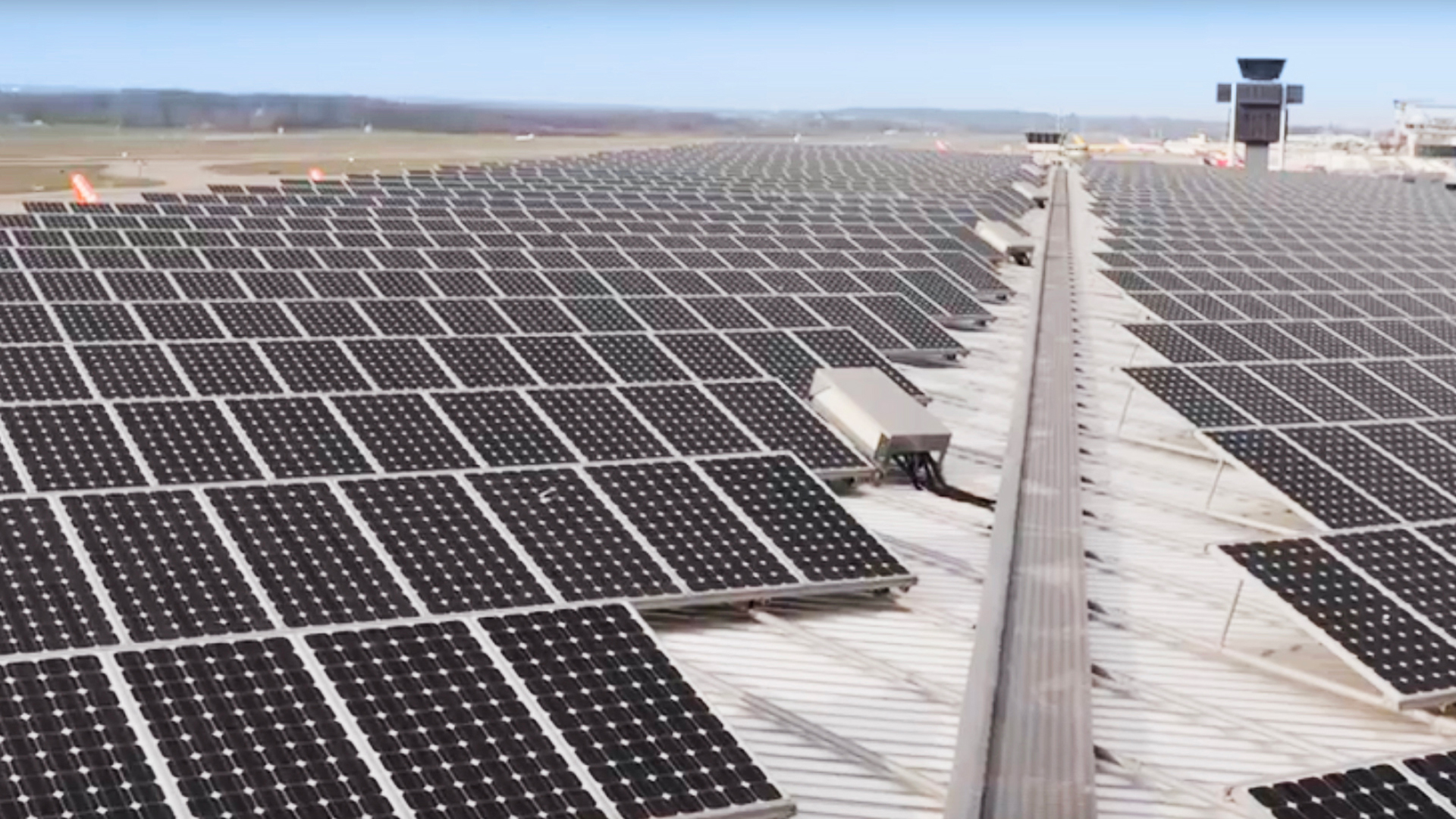
« Genève Aéroport, in 2019, boasted 13,466 m2 of solar panels. Its aim is to multiply this number by a factor of almost five. »
An update with Pierre-Yves Diserens, Head of Development and Energy
- What was the origin of the project?
- In 2017, the airport and SIG signed a partnership with the objective of achieving some 55,000 m2 of total area of photovoltaic panels on the airport roofs. Eventually, 7.8 GWh/year of electricity will be produced by 2030, which corresponds to the annual consumption of 2,500 households in Geneva.
- How are you going to reach the 55,000 m2 target?
- At present, 13,466 m2 of solar panels are already installed. In November 2020, the East Wing will be opened for the boarding and disembarkation operations of international flights. Almost 7,000 m2 of solar panels will be installed on its roof, which is 520 metres long. This facility alone will be able to produce about 1.6 GWh/year, doubling our annual solar production. Moreover, 1,100 m2 of photovoltaic panels will cover the Baggage Logistics Centre, which is scheduled to be operational by 2022.
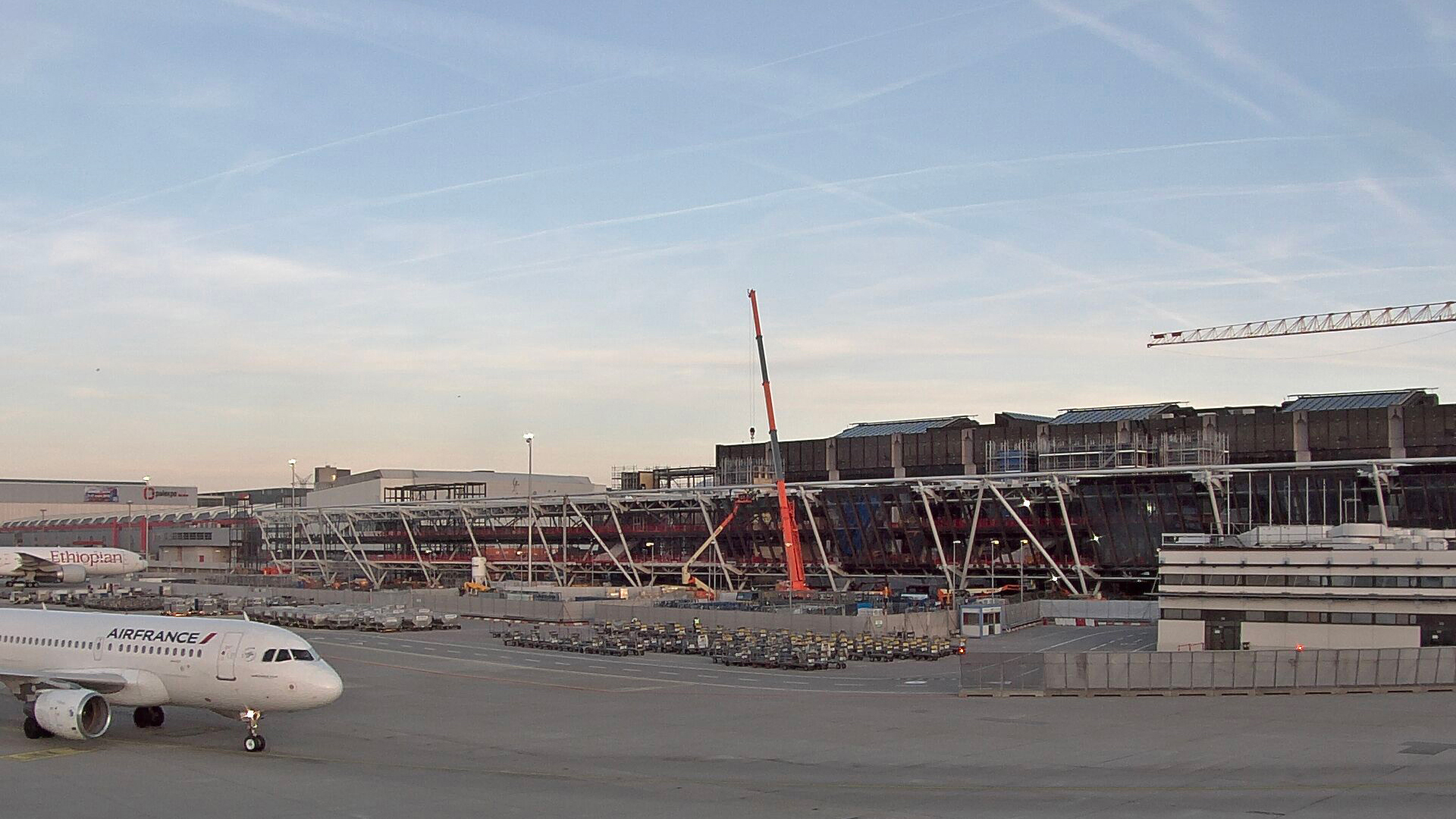
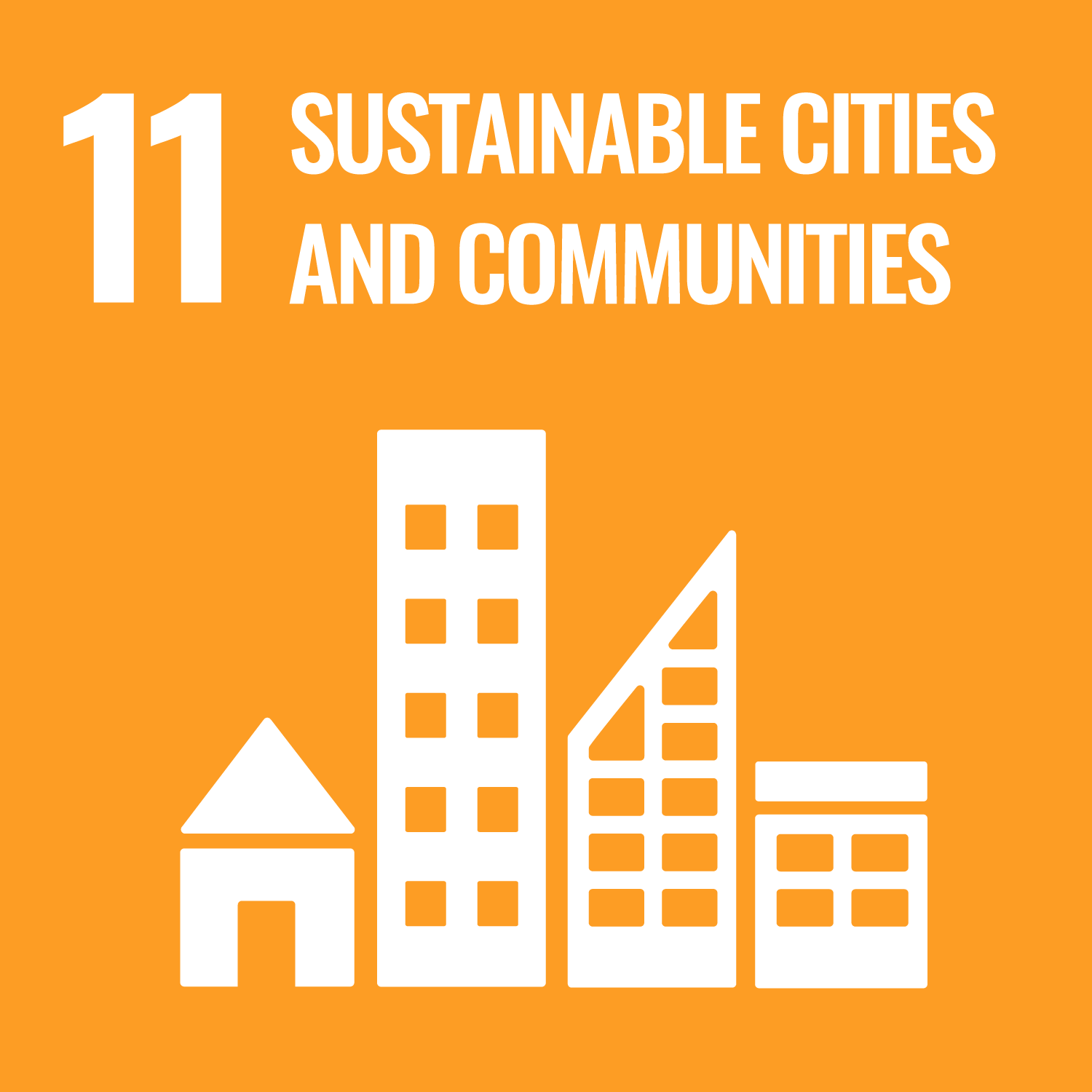
Promoting sustainable mobility
For several years, Genève Aéroport has been developing projects aimed at encouraging its passengers and employees to choose sustainable mobility. In 2019, 50.5% of passengers used sustainable modes of transport (public transport, buses, shuttles and trains) to reach the airport, compared to 45% in 2017. Therefore, the target, set at 45% by 2020, has been reached slightly ahead of schedule. For more than 10 years, Genève Aéroport has been financing public transport tickets for travellers landing in Geneva. Since the end of 2018, a new morning bus service (Aérobus) allows passengers and employees to get to the airport free of charge, between 04:30 and 06:00.
In 2017, 38% of employees used sustainable transportation to get to work. The target is to reach 45% by 2020. In order to achieve this figure, an ambitious mobility plan led by Genève Aéroport has been implemented for the airport site's employees. It combines both incentives and restrictive measures. Indeed, funding is granted to encourage employees to take out P+R or public transport cards. The public transport offer is completed by shuttles for employees working on irregular shifts, early in the morning (between 04:00 and 06:00) and late in the evening (between 00:30 and 01:30). In 2019, more than 28,000 people used this system.
In September 2019, a new awareness campaign on the mobility plan measures was launched for the benefit of personnel. In addition, Genève Aéroport is currently studying an application to facilitate carpooling for commuting airport employees. As far as restrictions are concerned, employees may obtain a parking pass at the airport only if there is insufficient public transport from their home.
« 1,587 employees on the airport site are benefiting from a sustainable mobility financial contribution from Genève Aéroport, including 443 Genève Aéroport's employees. »
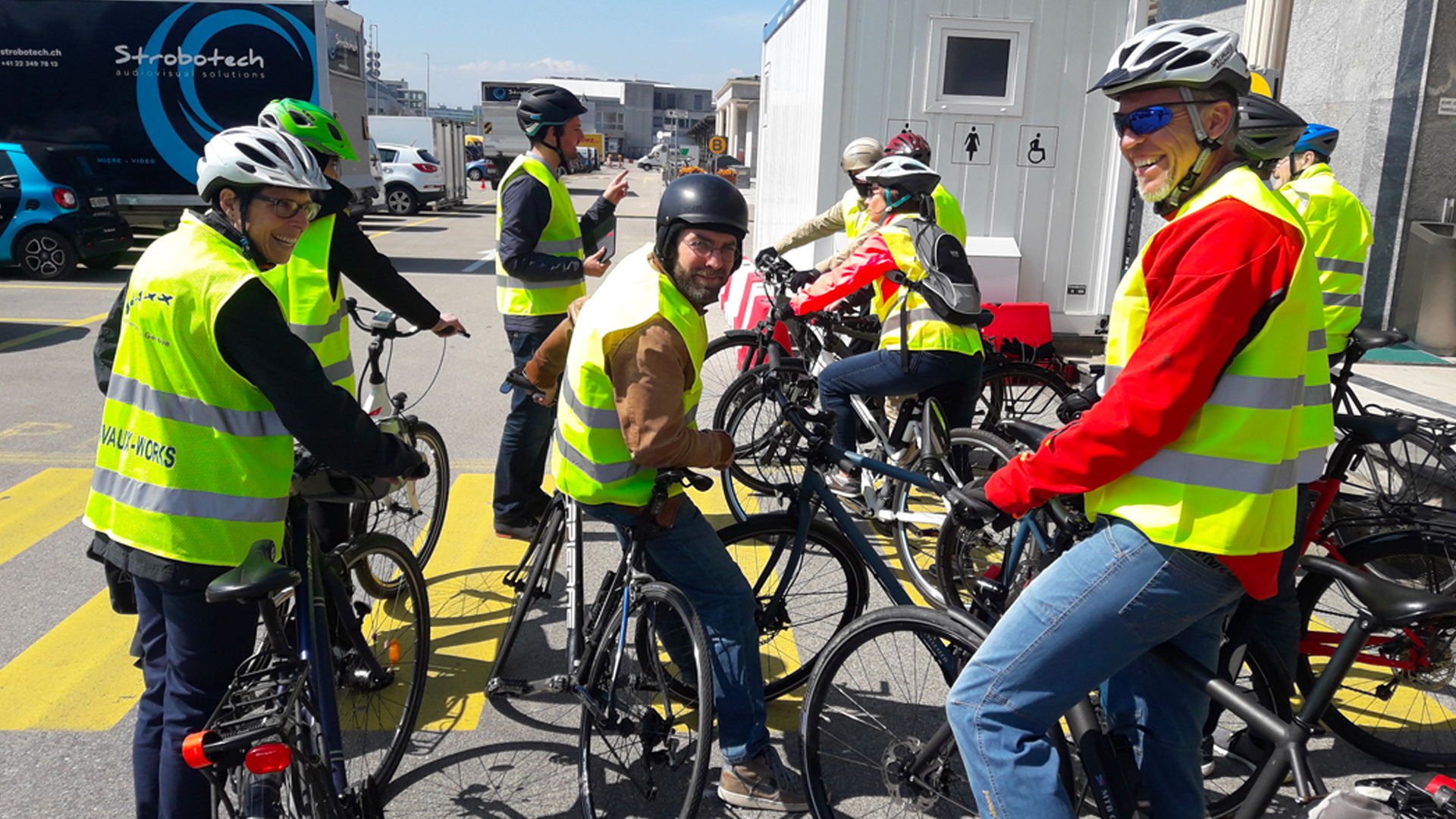
Bike to work participation
Each year, more employees take part in the national bike to work event. This event, which now takes place over two months, aims at encouraging staff to go to work by bike.
Therefore, in May and June 2019, Genève Aéroport employees travelled more than 37,000 km by bike.
Number of Genève Aéroport employees using Bike to Work
2017
74 people
2018
90 people
2019
89 people
Limiting vehicle emissions on the apron
Genève Aéroport is planning a massive electrification of its vehicles. In 2019, 29% of vehicles and equipment on the apron were electric or hybrid. The target set for 2020 is to reach 40%. Between 2015 and 2019, 210 charging points were installed on the apron. Another forty are scheduled by the end of 2020, five of which are very fast (fully charged in 2 hours) and two ultra-fast (fully charged in 10 minutes). In addition, ten electric buses for passenger transport are operational on the apron and two additional buses per year will complement this offer.
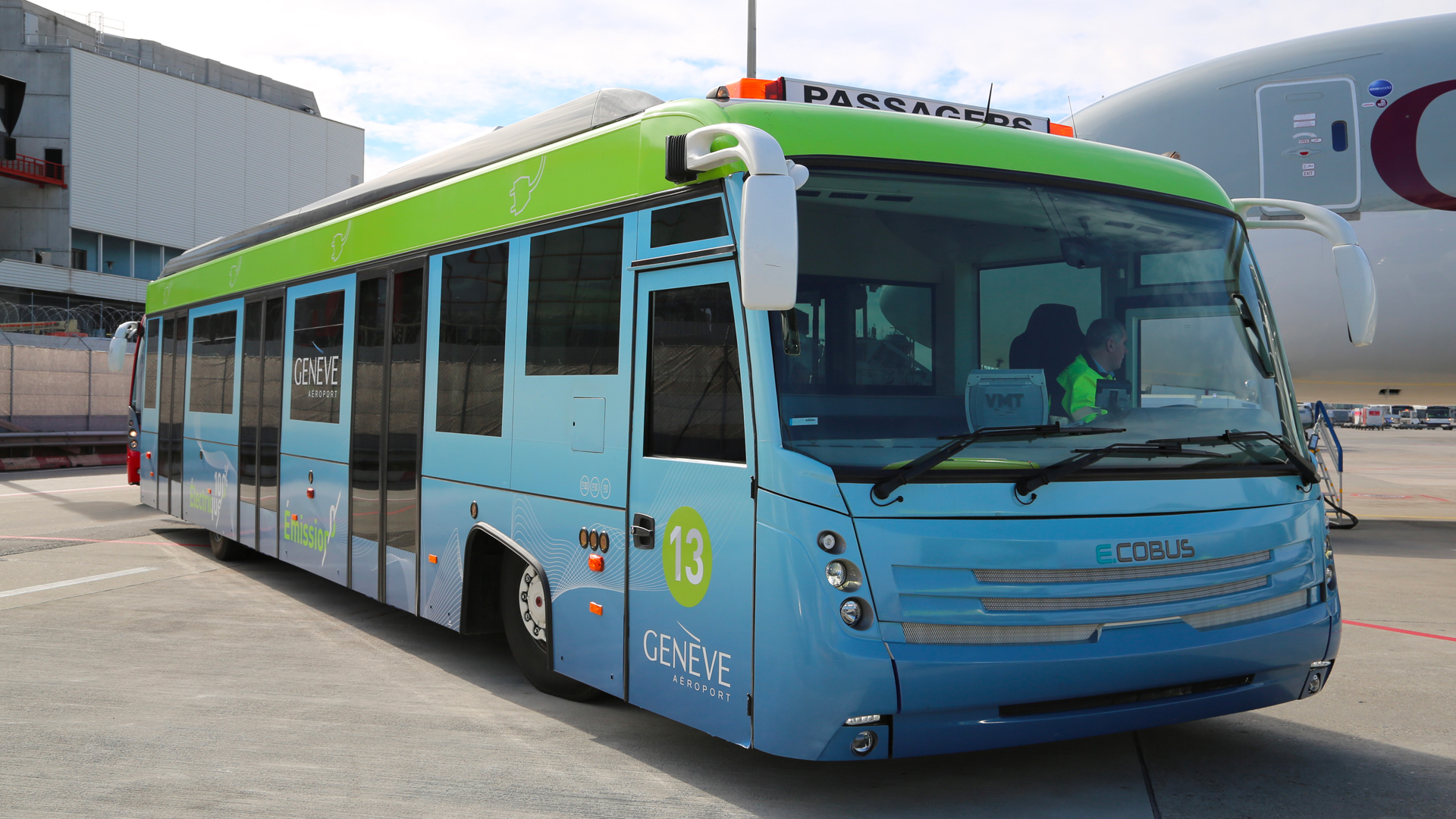

Partner electric vehicles
All partners are encouraged to limit their emissions. As of 1 January 2019, vehicles and equipment that do not comply with certain emission standards are no longer allowed. Moreover, runway authorisations for vehicles powered by heat engines, where an electric version at an equivalent price exists, are no longer granted.
At Swissport, 50% of the equipment is electric (some 143 vehicles, including cars, tractors, ladders and conveyor belts). At the same time, the company dnata has 49 electric vehicles and equipment.
Vehicles at the airport
To anti-pollution standards
71.4%
Electric or hybrid
29%
Charging points on the apron
210
